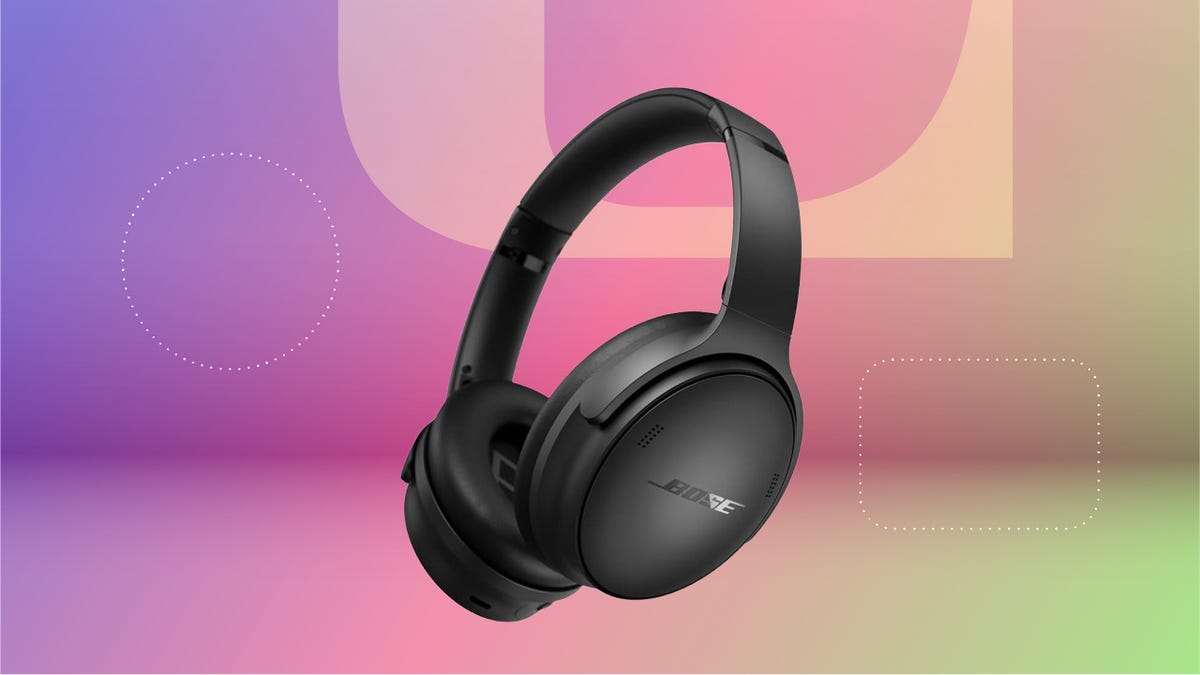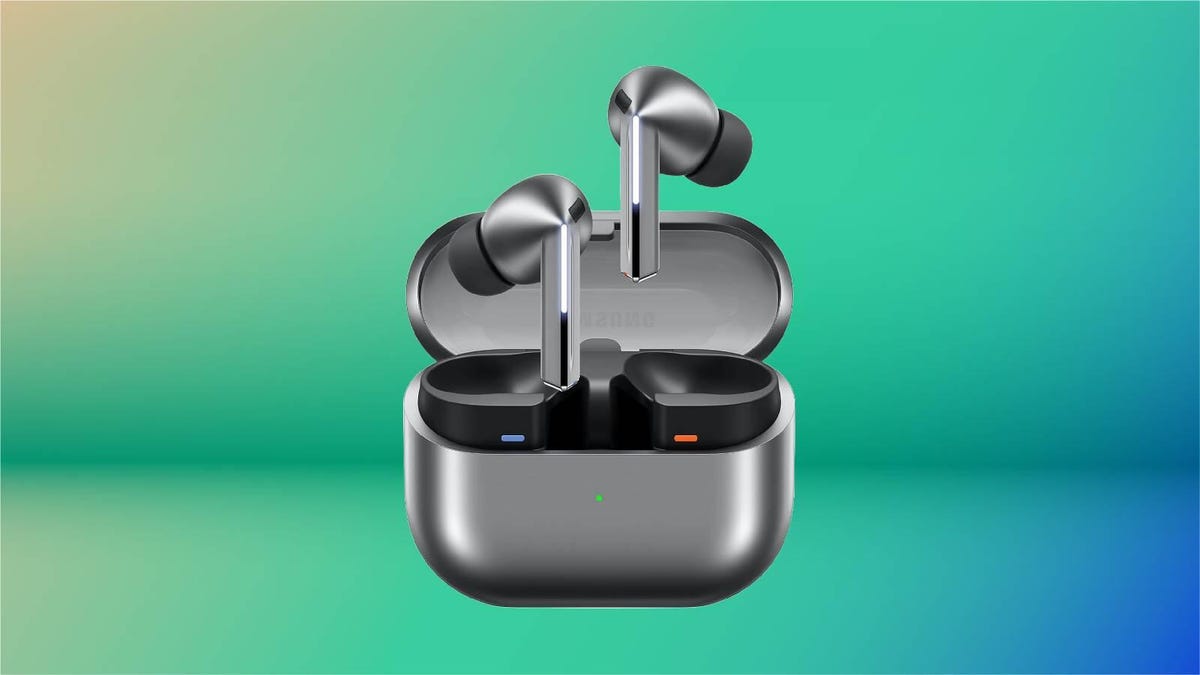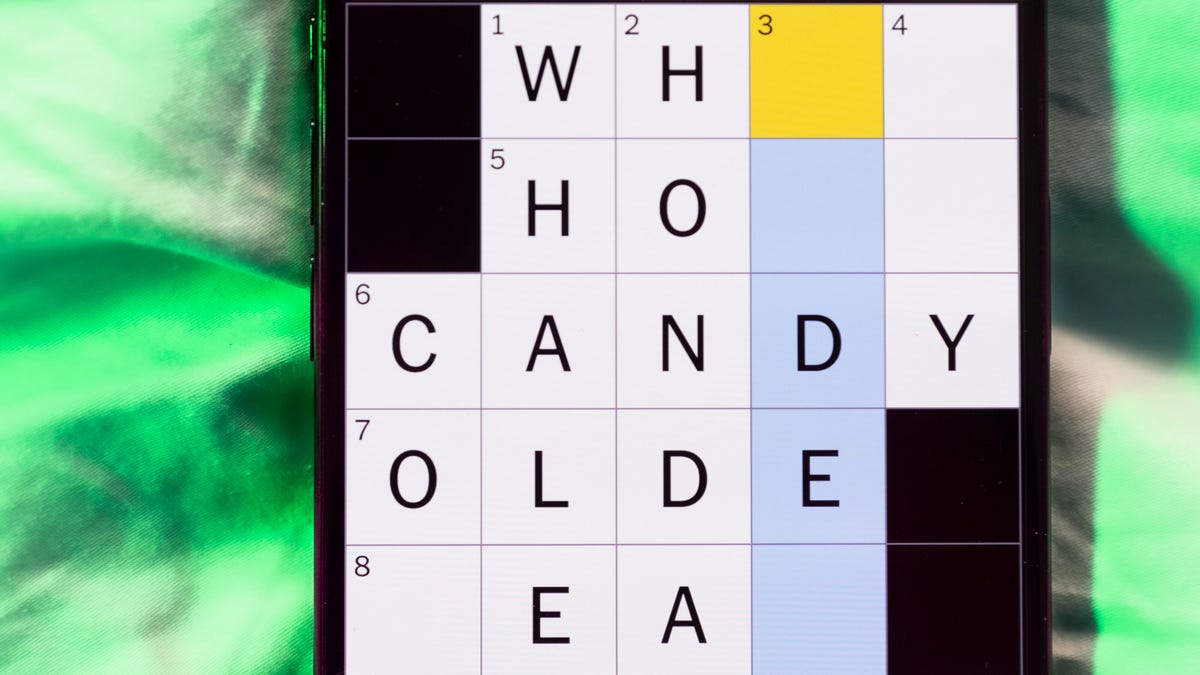Technologies
Google Pixel 9A vs. Pixel 9, 9 Pro, 9 Pro XL: How Do They Compare?
The budget Pixel 9A stands out from the other 9-series phones, beyond just its svelte profile.
The latest phone from Google now has a release date of April 10, which gives you time to compare the specs of the Pixel 9A with those of the 9, 9 Pro and 9 Pro XL. And though the new Pixel 9A is absolutely a less-expensive offering, it has several surprises worth scrutinizing.
The release of the new Pixel 9A completes this year’s Google phone lineup — and now we know it’s arriving in early April. We also have all the specs for the company’s most affordable phone.
With budget phones, the question is always, «What’s missing?» For example, Apple ditched MagSafe and stuck with a single camera for the iPhone 16E — which still comes in at $599. With the new Pixel 9A, what is Google giving up to hit a friendlier $499 price? Surprisingly, some specs meet or exceed those of its pricier siblings.
Hey, better battery
People consistently rate battery power as the most important consideration for a new phone, and here Google delivered. The Pixel 9A has a higher-powered battery than any of the other Pixel 9 phones. With a capacity of 5,100mAh, that’s more than the Pixel 9 Pro XL’s 5,060-mAh battery and a nice jump over the Pixel 9 and 9 Pro that each have a 4,700-mAh one.
The Pixel 9A is pokey about replenishing the battery, with a fast-charge rate at 23 watts instead of 45 watts on the other phones (and, of course, a charger is not included). Wireless Qi charging maxes out at 7.5 watts compared with 15 watts on the others.
A larger battery capacity in the Pixel 9A should support more intense computational work, along with the same Google Tensor G4 chipset as the other models. It will run the same Gemini AI features, although with less headroom: Its 8GB of RAM is generally considered the minimum amount of memory to run the algorithms and on-device processing used by AI. The Pixel 9 has 12GB of RAM, while the 9 Pro configurations have 16GB of RAM. For storage, the Pixel 9A comes in just 128GB or 256GB capacities.
Shaving costs with competent cameras
Not surprisingly, the cameras are a step down from the other Pixel 9 phones, reinforcing that mobile photography is an area people are willing to pay more for. The main wide camera captures 48-megapixel photos, compared with the 50-megapixel wide cameras on the others — which isn’t a significant difference. It is a drop from the 64-megapixel main camera on last year’s Pixel 8A but does support macro focus to ensure close-up photos are in focus.
The ultrawide camera, however, records just 13-megapixel images, compared with the 48-megapixel ultrawide cameras on each of the other models. Still, ultrawide cameras at 12- or 13-megapixel resolutions are still more common on phones from other companies, and they create good wide-angle images. Selfies via the front-facing camera are also 13-megapixel resolution, which is a step up from the 10-megapixel camera on the Pixel 9 but dwarfed by the 42-megapixel cameras on the 9 Pros.
A return to flatness
We all play along when phone companies reveal the thickness of their phones, which is measured by the depth of the bodies and usually doesn’t include the now-ubiquitous camera bumps. As long as most of a phone is svelte, it’s easy to overlook the extra few millimeters dedicated to the camera assembly — and the wobble when placed on a flat surface for some phones.
Why? Because the cameras are some of the most important features of a modern phone. We’ll accept a little cantilevering in exchange for 10x optical zoom.
Someone forgot to remind the Pixel 9A designers, though, because its dual camera lenses are nearly flush with the rest of the phone’s back. There’s still a tiny elevation, which CNET’s Patrick Holland described as «enough to catch your nail on it,» but compared with the pronounced camera ledge on the other Pixel 9 models, the Pixel 9A rests nearly flat.
The opposite side of the body has the same 6.3-inch OLED screen as the Pixel 9, measuring 2,424×1,080 pixels for a 422 pixels-per-inch density and a 60Hz to 120Hz variable refresh rate. It even maxes out at 2,700 nits like the Pixel 9.
The phone’s dimensions, however, are slightly larger than the Pixel 9, being 1.9mm taller, 1.3mm wider and 0.4mm deeper. Even so, the Pixel 9A is the lightest of the phones at 186g (6.6 ounces).
To compare the specs between all Pixel 9-series phones, dig into the details below:
Pixel 9A specs vs. Pixel 9, Pixel 9 Pro, Pixel 9 Pro XL
| Google Pixel 9A | Google Pixel 9 | Google Pixel 9 Pro | Google Pixel 9 Pro XL | |
| Display size, tech, resolution, refresh rate | 6.3-inch OLED; 2,424×1,080 pixels; 60-120 Hz variable refresh rate | 6.3-inch OLED; 2,424×1,080 pixels; 60-120 Hz variable refresh rate | 6.3-inch LTPO OLED; 2,856×1,280 pixels; 1-120Hz variable refresh rate | 6.8-inch LTPO OLED; 2,992×1,344 pixels; 1-120Hz variable refresh rate |
| Pixel density | 422 ppi | 422 ppi | 495 ppi | 486 ppi |
| Dimensions (inches) | 6.1 x 2.9 x 0.4 in | 6×2.8×0.3 inches | 6×2.8×0.3 inches | 6.4x3x0.3 inches |
| Dimensions (millimeters) | 154.7 x 73.3 x 8.9 mm | 152.8x72x8.5 mm | 152.8x72x8.5 mm | 162.8×76.6×8.5 mm |
| Weight (grams, ounces) | 186g (6.6 oz) | 198g (7 oz.) | 199g (7 oz.) | 221g (7.8 oz) |
| Mobile software | Android 15 | Android 14 | Android 14 | Android 14 |
| Camera | 48-megapixel (wide), 13-megapixel (ultrawide) | 50-megapixel (wide), 48-megapixel (ultrawide) | 50-megapixel (wide), 48-megapixel (ultrawide), 48-megapixel (5x telephoto) | 50-megapixel (wide), 48-megapixel (ultrawide), 48-megapixel (5x telephoto) |
| Front-facing camera | 13-megapixel | 10.5-megapixel | 42-megapixel | 42-megapixel |
| Video capture | 4K | 4K | 4K | 4K |
| Processor | Google Tensor G4 | Google Tensor G4 | Google Tensor G4 | Google Tensor G4 |
| RAM/storage | 8GB + 128GB, 256GB | 12GB RAM + 128GB, 256GB | 16GB + 128GB, 256GB, 512GB, 1TB | 16GB + 128GB, 256GB, 512GB, 1TB |
| Expandable storage | None | None | None | None |
| Battery | 5,100 mAh | 4,700 mAh | 4,700 mAh | 5,060 mAh |
| Fingerprint sensor | Under display | Under display | Under display | Under display |
| Connector | USB-C | USB-C | USB-C | USB-C |
| Headphone jack | None | None | None | None |
| Special features | 7 years of OS, security and Pixel feature drops; Gorilla Glass 3 cover glass; IP68 dust and water resistance; 2,700-nit peak brightness; 1,000,000:1 contrast ratio; 23W fast charging (charger not included); 7.5W wireless charging Qi certified; Wi-Fi 6E; NFC; Bluetooth 5.3; dual-SIM (nano SIM + eSIM); Add Me; Best Take; Magic Eraser; Magic Editor; Photo Unblur; Super Res Zoom; Circle To Search | Satellite SOS; 7 years of OS, security and Pixel feature drops; Gorilla Glass Victus 2 cover glass; IP68 dust and water resistance; 2,700-nit peak brightness; 45W fast charging (charger not included); 15W wireless charging with Google Pixel Stand (second gen); 12W wireless Qi-charging; Wi-Fi 6 and Wi-Fi 7; NFC; Bluetooth 5.3; dual-SIM (eSIM + nano SIM); Add Me; Best Take; Magic Eraser; Magic Editor | Satellite SOS; 7 years of OS, security and Pixel feature drops; IP68 dust and water resistance; Video Boost with 8K Upscaling; Macro Focus on ultrawide; Gorilla Glass Victus 2 cover glass; 3,000-nit peak brightness; 45W fast charging (charger not included); 15W wireless charging with Google Pixel Stand (second gen); 12W wireless Qi-charging; Wi-Fi 6 and Wi-Fi 7; NFC; Bluetooth 5.3; dual-SIM (eSIM + nano SIM); Add Me; Best Take; Magic Eraser; Magic Editor | Satellite SOS; 7 years of OS, security and Pixel feature drops; IP68 dust and water resistance; Video Boost with 8K Upscaling; Macro Focus on ultrawide; Gorilla Glass Victus 2 cover glass; 3,000-nit peak brightness; 45W fast charging (charger not included); 15W wireless charging with Google Pixel Stand (second gen); 12W wireless Qi-charging; Wi-Fi 6 and Wi-Fi 7; NFC; Bluetooth 5.3; dual-SIM (eSIM + nano SIM); Add Me; Best Take; Magic Eraser; Magic Editor |
| US price starts at | $499 (128GB) | $799 (128GB) | $999 (128GB) | $1,099 (128GB) |
| UK price starts at | Converts to £385 (128GB) | Converts to £640 (128GB) | Converts to £780 (128GB) | Converts to £860 (128GB) |
| Australia price starts at | Converts to AU$780 (128GB) | Converts to AU$1,210 (128GB) | Converts to AU$1,510 (128GB) | Converts to AU$1,670 (128GB) |
Technologies
This $199 Bose QuietComfort Headphones Deal Is the Best I’ve Seen
With a $150 discount, this Bose QuietComfort headphones deal is impossible to beat.

We’re big fans of personal audio gear, especially high-quality headphones. The Bose QuietComfort headphones definitely fall into that category. In fact, CNET’s expert editors rank them as some of the best noise-canceling headphones on the market today. But that doesn’t mean you have to pay the retail price — right now, both Amazon and Walmart are offering them for a best-ever price.
Strike now and you’ll snag a pair of Bose QuietComfort wireless headphones at a great discount of $150. Walmart is offering them for just $199 in select colors. But if you want more variety, Amazon is price-matching across the entire color range. Just keep in mind that I can’t promise that either of these deals will last for long.
The QuietComfort headphones include noise cancellation and have Quiet and Aware modes, so you can focus as needed or let some ambient sound in when you’re taking walks or need to know what’s happening around you.
Hey, did you know? CNET Deals texts are free, easy and save you money.
Adjustable EQ lets you customize your sound preferences, and a battery life of up to 24 hours makes these headphones the perfect travel companion. Need a battery boost? It only takes a 15-minute charge to get an extra battery life of up to 2.5 hours.
If this isn’t quite the product you’re looking for, check out our list of the best wireless headphones to find the right pair for you. There are plenty of different options from various manufacturers, with something for everyone.
HEADPHONE DEALS OF THE WEEK
-
$300 (save $51)
-
$299 (save $151)
-
$220 (save $180)
Why this deal matters
Bose makes some of the best headphones on the market. This deal offers QuietComfort headphones for just $199 after slashing $150 off the regular price. That’s the lowest price I’ve seen on these headphones, and a massive discount. Just be sure to get your order in soon.
Join Our Daily Deals Text Group!
Get hand-picked deals from CNET shopping experts straight to your phone.
By signing up, you confirm you are 16+ and agree to receive recurring marketing messages at the phone number provided. Consent is not a condition of purchase. Reply STOP to unsubscribe. Msg & data rates may apply. View our Privacy Policy and Terms of Use.
Technologies
The Best Earbuds for Samsung Users Are Just $165, but for How Long?
The Samsung Galaxy Buds 3 look and sound great, and this deal smashes the usual $250 asking price.

While it’s true that Apple’s latest AirPods Pro 3 tend to dominate the conversation when discussing premium Bluetooth earbuds, they aren’t the only option. In fact, if you’re ensconced in Samsung’s ecosystem, they’re obviously not going to be a great fit. The solution? Samsung’s Galaxy Buds 3 Pro, which you can get on sale right now for just $165 on Amazon.
It isn’t quite the cheapest price we’ve seen, but it isn’t all that far off. And while they might fall slightly during the upcoming Black Friday sales, we don’t expect them to go far beyond their lowest price of around $150.
There are plenty of options out there for non-Apple users looking for a good pair of wireless earbuds. To give you one example, CNET’s own list of the best wireless earbuds named Sony’s WF-1000XM5 as the best pair on the market. Elsewhere on that list, though, CNET also named the Galaxy Buds 3 Pro as the best option for Samsung users, and it’s not hard to see why.
Hey, did you know? CNET Deals texts are free, easy and save you money.
These earbuds boast a number of features tailored to folks with Samsung Galaxy or any other sort of Android smartphone, most notably support for the «high-resolution» Samsung Seamless Codec for audio quality. Those users will also have access to the Galaxy Wear app, which is the exclusive method the company uses to push through updates. While you can technically connect these buds to an iPhone, you won’t find the Wear app in Apple’s App Store, leaving the experience far from ideal.
Beyond those exclusive perks for Android users, CNET’s audio guru Dave Carnoy said in his review of the Galaxy Buds 3 Pro that you can expect a «lightweight and comfortable» feel, excellent audio and call quality, and some solid noise-cancellation to boot. The primary flaw he noted was the price, which this deal definitely helps with.
Why this deal matters
The Galaxy Buds 3 Pro are the top-of-the-line when it comes to Samsung earbuds, which means that most of the time you can expect a top-of-the-line price tag to match. Now, however, you can grab yourself a pair for considerably less.
Technologies
Today’s NYT Mini Crossword Answers for Friday, Oct. 31
Here are the answers for The New York Times Mini Crossword for Oct. 31.

Looking for the most recent Mini Crossword answer? Click here for today’s Mini Crossword hints, as well as our daily answers and hints for The New York Times Wordle, Strands, Connections and Connections: Sports Edition puzzles.
Happy Halloween! Today’s NYT Mini Crossword features the word «BOO!» in a square on the last line of the grid. That’s not just a Halloween greeting, it’s part of the answer that spans both 9-Across and 10-Across, so read the answers to both those with the «boo» in the middle to solve it. And then, the puzzle-makers use that «BOO!» again, to help make the answer to 3-Down. Read on for all the answers, complete with added boos. And if you could use some hints and guidance for daily solving, check out our Mini Crossword tips.
If you’re looking for today’s Wordle, Connections, Connections: Sports Edition and Strands answers, you can visit CNET’s NYT puzzle hints page.
Read more: Tips and Tricks for Solving The New York Times Mini Crossword
Let’s get to those Mini Crossword clues and answers.
Mini across clues and answers
1A clue: Buffalo hockey player
Answer: SABRE
6A clue: «I’ll have the ___» (frequent customer’s order)
Answer: USUAL
7A clue: Contents of a volcano
Answer: MAGMA
8A clue: Adjust to a new environment
Answer: ADAPT
9A clue: With 10-Across, last car on a train
Answer: CA
10A clue: See 9-Across
Answer: SE
(The «Boo!» shown in the grid helps make the word CABOOSE)
Mini down clues and answers
1D clue: «Poison» shrub
Answer: SUMAC
2D clue: Carne ___
Answer: ASADA
3D clue: Imaginary cause of fear
Answer: BUGA
(The «Boo!» shown in the grid helps make the word BUGABOO)
4D clue: Accessible alternatives to staircases
Answer: RAMPS
5D clue: Make extremely happy
Answer: ELATE
-

 Technologies3 года ago
Technologies3 года agoTech Companies Need to Be Held Accountable for Security, Experts Say
-

 Technologies3 года ago
Technologies3 года agoBest Handheld Game Console in 2023
-

 Technologies3 года ago
Technologies3 года agoTighten Up Your VR Game With the Best Head Straps for Quest 2
-

 Technologies4 года ago
Technologies4 года agoVerum, Wickr and Threema: next generation secured messengers
-

 Technologies4 года ago
Technologies4 года agoBlack Friday 2021: The best deals on TVs, headphones, kitchenware, and more
-

 Technologies4 года ago
Technologies4 года agoGoogle to require vaccinations as Silicon Valley rethinks return-to-office policies
-

 Technologies4 года ago
Technologies4 года agoOlivia Harlan Dekker for Verum Messenger
-

 Technologies4 года ago
Technologies4 года agoiPhone 13 event: How to watch Apple’s big announcement tomorrow
